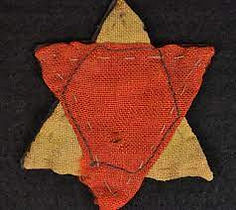
Spoiler Alert!
If you haven't read Drawn from Memory yet, read no further! This page gives away key events of the book.
History of Drawn
from Memory
Whenever I read a novel "based on real events,"
I'm curious which are the real ones and which aren't.
Here's a few details about that. Learn more about Denmark and Terezin and their role in Holocaust history here.


Danish Rescue of the Jews
The details about the rescue of the Jews in Denmark are based on true events. Denmark saved 7,220 of their people from deportation. The picture here is a fishing boat carrying some of them to Sweden.

Real Monopoly boards created
for children of Terezin.
Terezin was the Czech name of the camp. The Germans referred to it as Theresienstadt. I called it
Terezin throughout the book to avoid confusion.

Culture in Terezin
Terezin was a propaganda tool from the beginning. The Nazis would send cultural leaders to the ghetto and allowed inmates to participate in artistic pursuits. Events of every kind happened during their evening Leisure Time. It was the only place in the German Empire where Jews could legally gather and perform together.
Defiant Requiem

Every year the Defiant Requiem is performed to pay tribute
to the bravery of Raphael Salzberg and his choir. It is a combination of a multi-media show and choral performance. The choir, including Schacter was sent to Auschwitz. Schacter died during the forced march from the camp at the end of the war.
What happened to Terezin after the Danes left?
By May, 1945, thousands of prisoners came to Terezin from other camps as the Allies closed in on Nazi Germany. Terezin leadership did try to build a gas chamber there, but Czech partisans in the area were tipped off, and the Red Cross sprung a visit on them. By then, it was clear the war was over. The Red Cross took over the camp, and the Germans
fled by May 6. Soviet troops liberated Terezin on May 9.
By August, the prisoners were returned home and replaced with German and Czech prisoners of war. The Commandant who led the camp was executed for war crimes. The head of the Czech gendarmes died in prison awaiting trial.
Pink Triangles

Pre-Nazi Berlin was one of the safest places to be queer at the time, but that changed when Hitler came to power. Pink triangles were placed on gay and bi men and trans women in Nazi Germany. Queer women and trans men were rarely persecuted for their sexuality. The one shown here indicates the person was also Jewish.
Queer German men were not released from concentration camps after the war. Because homosexuality was still illegal there, people remained in prison until the early 1960's in some cases. By the early 1970's, the upside down pink triangle was reclaimed by gay rights activists to show their pride.
The Red Cross visited Terezin in 1943. The "Embellishment" was the effort to use Terezin as a propaganda tool as shown in the book. People tried to slip notes to the delegates, but they still found the camp "acceptable." The picture is of the children calling to the Commandant at the soccer game.
Red Cross Visit


Artist's Affair
Like in the book, four artists were caught trying to get artwork like this to the Allies. One was beaten to death. The rest were sent to Auschwitz with their families. Leo Haas was the only one to survive. He went back to Terezin to retrieve more of his hidden drawings. The drawing above is one of his.


